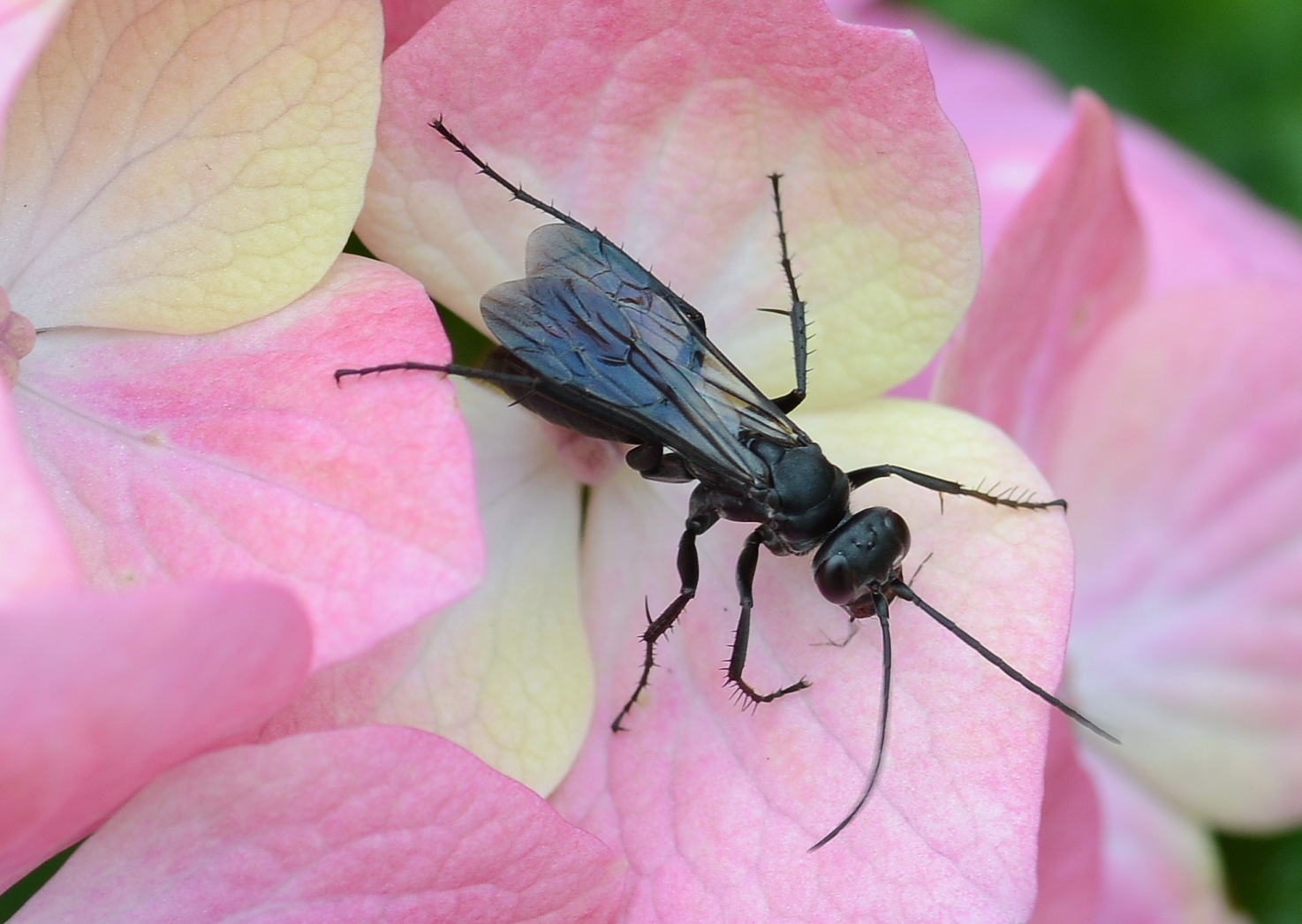|
Pompilinae
The Pompilinae are a subfamily of the spider wasp family, Pompilidae Wasps in the family Pompilidae are commonly called spider wasps, spider-hunting wasps, or pompilid wasps. The family is cosmopolitan, with some 5,000 species in six subfamilies. Nearly all species are solitary (with the exception of some group-ne ..., the species of which lay their eggs on the paralyzed bodies of their prey. Taxonomy and phylogeny Tribal classification has been revised numerous times with little consensus between authors. Bradley's 1944 classification used 7 tribes: Allocharini, Allocyphononychini, Aporini, Ctenocerini, Epipompilini, Pedinaspini, Pompilini. Evans's 1951 classification only included 5 of these tribes, omitting Allocharini and Allocyphononychini. Ctenocerini has since been elevated to subfamily status as Ctenocerinae, and Epipompilini has been omitted by Pitts et al. in 2006. Engel and Grimaldi, later in 2006, included 17 extant tribes: Allocharini, Allocyphonychini, Anoplage ... [...More Info...] [...Related Items...] OR: [Wikipedia] [Google] [Baidu] |
Pompilidae
Wasps in the family Pompilidae are commonly called spider wasps, spider-hunting wasps, or pompilid wasps. The family is cosmopolitan, with some 5,000 species in six subfamilies. Nearly all species are solitary (with the exception of some group-nesting Ageniellini), and most capture and paralyze prey, though members of the subfamily Ceropalinae are kleptoparasites of other pompilids, or ectoparasitoids of living spiders. In South America, species may be referred to colloquially as or , though these names can be generally applied to any very large stinging wasps. Furthermore, in some parts of Venezuela and Colombia, it is called , or "horse killers", while in Brazil some particular bigger and brighter species of the general kind might be called /, or "throat locker". Morphology Like other strong fliers, pompilids have a thorax modified for efficient flight. The metathorax is solidly fused to the pronotum and mesothorax; moreover, the prothorax is best developed in Pompilidae ... [...More Info...] [...Related Items...] OR: [Wikipedia] [Google] [Baidu] |

